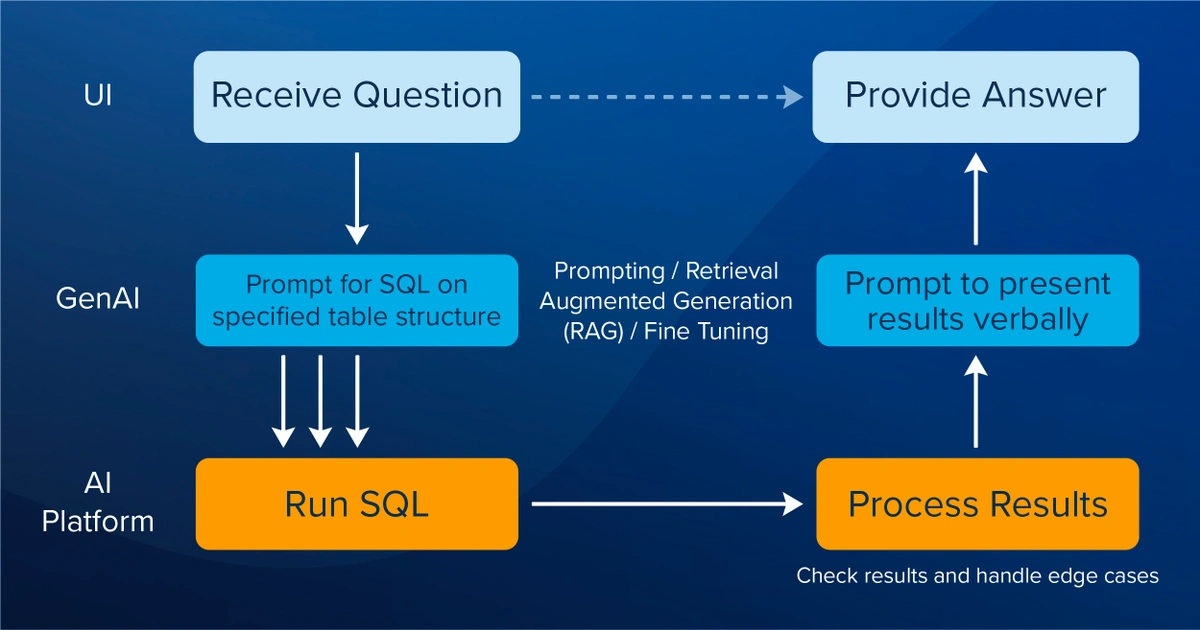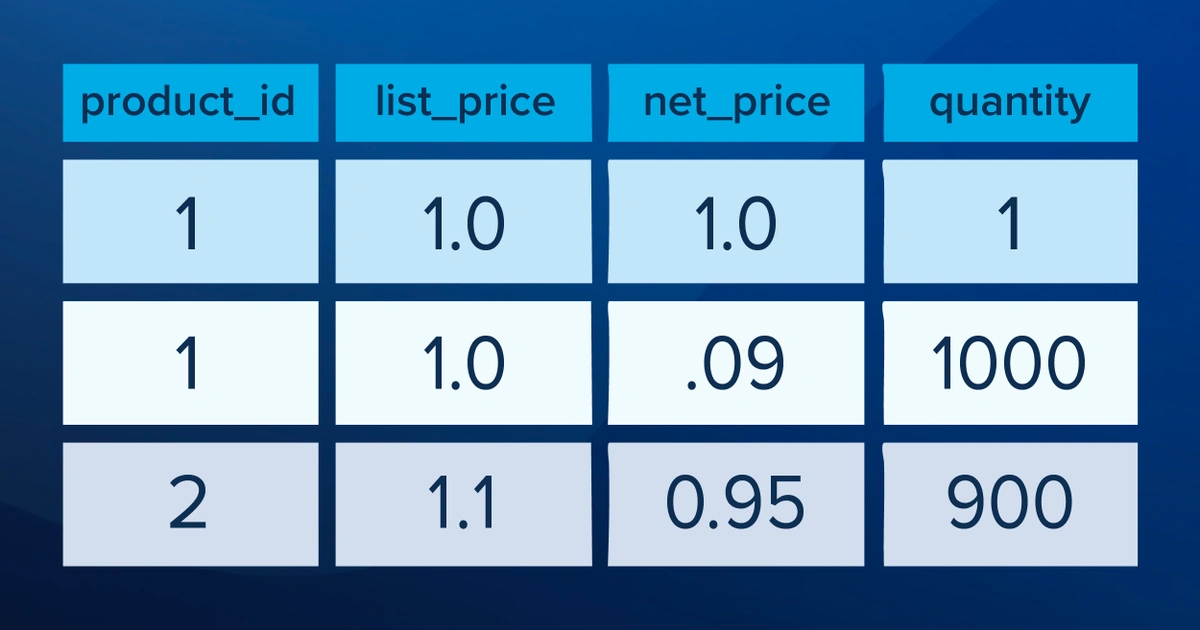
How to navigate AI-driven pricing when precision is critical
Generative AI has revolutionized various industries by offering advanced tools for extracting insights from complex datasets. In pricing, this transformative technology holds great promise for identifying repricing opportunities and optimizing strategies. However, applying generative AI to pricing comes with its own set of challenges, requiring careful consideration of data structure, interpretation and integration.
In this blog, I’ll explore the potential of generative AI in pricing, the obstacles it faces and the solutions to overcome them for effective execution.
Is Gen AI the skeleton key?
Generative AI, especially when integrated with chatbots, provides direct answers to user queries. As a data scientist, I can tell you that when you look “behind the door”, this process is more complicated than it might seem. This figure shows one way the process might unfold:
The user's question is translated into an equivalent SQL query, which is executed independently and then merged back into the response prior to delivery to the user. This approach offers 3 distinct advantages for pricing applications:
- Proprietary data remains secure as it does not need to be transmitted to the generative AI platform.
- Minimizing the number of tokens processed reduces operational costs.
- Leveraging SQL servers ensures complex calculations are performed efficiently without burdening the AI platform.
These benefits make generative AI a valuable tool for analyzing large transaction datasets and uncovering actionable pricing insights.
A key challenge in computing
Computers, including generative AI platforms, inherently struggle with ambiguity. In traditional applications with directly coded statements, ambiguity would result in a straightforward failure to execute. However, in generative AI, failures are less obvious and require careful handling to avoid inaccurate outputs. Pricing applications, where precision is critical, leave little room for error. To mitigate this, appropriate guardrails must be implemented, and data must be structured and annotated to eliminate ambiguity and ensure reliable results.
Let’s examine a couple of examples of what can go wrong when we ask a simple question of, “What is the most expensive product?” if only the following transaction data is supplied:
The AI platform will simply guess which column to use and what is meant by “most expensive” and then return the following query:
However, this may not align with the desired outcome: the list price is used instead of the net price, and the calculation is based on a single-unit transaction rather than a quantity-weighted price, which would be more appropriate in this context. This highlights the importance of complementing the data with a comprehensive data dictionary that provides precise field definitions — clear enough for even a computer to interpret and apply accurately.
A similar issue arises when determining the best-selling product by revenue. If the AI agent selects the list price column instead of the net price column, the result will be inaccurate. To mitigate this risk, pre-computed values for critical metrics like revenue should be used, minimizing the chance for errors and ensuring reliable outputs.
Unlock the power of AI-ready data
These examples are intentionally basic, yet even simple questions can be highly ambiguous. For instance, asking about revenue trends raises the question: what exactly constitutes a "trend"? Does it refer to year-over-year changes, or a statistical analysis where the significance of the slope indicates whether revenue is "increasing," "stable" or "decreasing"?
A practical solution I recommend is to create subsidiary tables from the transaction dataset that incorporate clear guardrails and configuration options. These tables precisely define concepts like trends, specify the level (e.g., product or product group) for pricing actions, and establish key boundaries for metrics such as price elasticity and price efficiency, ensuring consistent and accurate interpretation.
Generative AI is a powerful tool, but it has its limits — it cannot provide answers to questions that are genuinely ambiguous. Success in using it for pricing applications requires:
- Data to be structured and annotated with clear definitions. A very precise data dictionary should define each field explicitly, such as “net price” or “list price.”
- Key quantities should be precalculated or supplied through external APIs rather than relying solely on generative AI platforms. This minimizes errors and enhances the reliability of results.
One final thought: I feel it’s important to note that generative AI is not a standalone solution. It complements standard pricing techniques by enhancing decision-making and providing deeper insights. Solutions that allow for explicit user configuration of key parameters and guardrails against undesired behavior will always be needed. Is it time to explore how generative AI can revolutionize your pricing strategy?
Want to gain deeper insight pricing and AI? Watch our on-demand webinar!
Get the latest news, updates, and exclusive insights from Vistex delivered straight to your inbox. Don’t miss out—opt in now and be the first to know!



